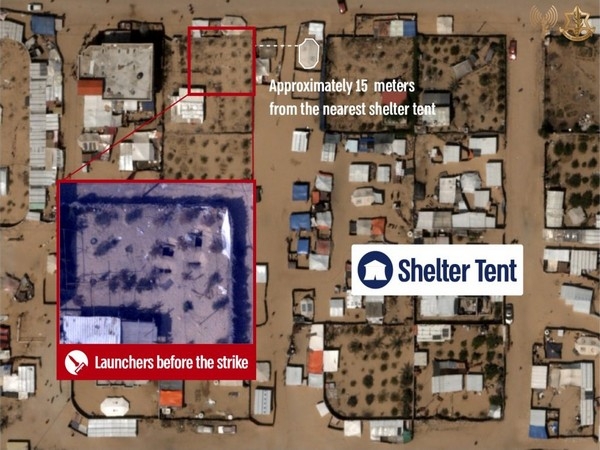Latehar hangings: Justice denied as accused Gau Rakshaks roam free
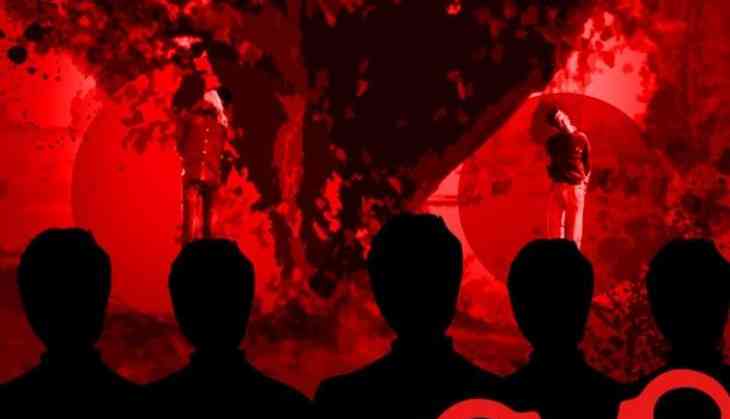
The hanging of Mazloom Ansari and 12 year old Imtiaz Khan in Jharkhand's Latehar has been one of the most grusome killings by Hindutva vigilantes in the country. But even two years after their murder, the trial has reached nowhere and the accused are all out on bail. This, despite the accounts by eyewitnesses as well as confessions by many of the accused. Catch had reported in detail about the confessions of the accused as well as the process of radicalisation they might have gone through.
An independent investigation led by journalist Ajit Sahi has found startling details of how the probe into the horrific murder and hanging, appears to have been subverted.
Here are selected excerpts from the report:
The context
On March 18, 2016, in a remote rural part of Latehar district of Jharkhand, a group of Hindu men self-styled as gau rakshaks kidnapped two Muslims, Mazloom Ansari (32) and Imtiaz Khan (12), beat them mercilessly, and hanged them to death by a tree. At the time the group waylaid the victims that fateful day, Mazloom, a livestock trader, and Imtiaz, his business partner’s son, were walking eight oxen to a cattle fair to sell.
Though gau rakshaks attacks had already shot up since Prime Minister Narendra Modi came to power
in May 2014, this killing was the first to meet the classic definition of a “lynching” — hanged by a mob — originating in the racist history of the U.S. where for centuries White supremacists lynched thousands of Africans, Latinos and even native Americans.
The brutal murders of Mazloom and Imtiaz in Latehar instantly reverberated across the world. Various speakers called it out at a hearing on India’s human rights, held in June 2016, at the Tom Lantos Human
Rights Commission of the U.S. Congress at Washington, D.C. Numerous reports submitted to the U.N. Human Rights Council ahead of its Universal Periodic Review (UPR) in 2017 of India’s record of human rights violations also prominently mentioned this specific crime. To this date, however, neither the Government of India and nor the Government of Jharkhand has condemned the hangings and the gau rakshaks. No compensation has yet been made to the victims’ families.
Indisputable facts
As with most lynchings by gau rakshaks across India, this ghastly incident, too, is backed by eyewitness accounts and other testimonies. These clearly establish the following:
•At least three people saw the crime being committed;
•The eyewitnesses knew at least some of the murderers by face and name;
•The murderers had previously threatened to kill the victims unless they stopped trading in cattle
Yet, as this report shows, not only did the police not fully investigate the crime, basis these eyewitness
accounts and testimonies, but also failed to press appropriate charges against the accused. This has
considerably weakened the case, as a consequence of which every one of the accused was able to secure bail from the Jharkhand High Court.
Eyewitness accounts
The three eyewitnesses of the crime are Manowar Ansari, the younger brother of Mazloom; Azad Khan, the father of Imtiaz Khan; and Mohammad Nizamuddin, a business partner of Mazloom’s and Azad’s. Nizamuddin had been accompanying Mazloom and Imtiaz on his motorcycle but had fallen behind by a few minutes before the abduction.
Similarly, Azad Khan had left home on his motorcycle to follow his son who had left a half hour earlier with the oxen. Nizamuddin and Azad separately reached the spot after Mazloom and Imtiaz had already been abducted and their oxen stolen.
Manowar saw gau rakshaks hang his brother to death Nizamuddin fled the scene and phoned Manowar, who was home. He, too, rushed to the spot. Manowar and Azad Khan hid nearby and watched in horror as
Mazloom and Imtiaz were beaten and strung by a rope to a tree. Nizamuddin returned shortly and joined Manowar and Azad, also hiding at a distance.
Manowar Ansari:
Manowar says once the crime was over the police arrived on the scene at around 7 a.m. He immediately gave the police details of the crime he had witnessed. But the police did not write down anything, a claim he reiterated in his deposition before the court in November 2017. (Whereas most witnesses present on the scene corroborate that the police arrived at that time, the FIR, as we see later in this report, gives a much later time.)
In his deposition before the court, Manowar named and recognised five of the eight accused — Arun Saw, Mithilesh alias Bunty Sahu, Manoj Sahu, Avdesh Saw and Vishal Tiwari. He said Manoj had been his schoolteacher. Manowar told the court he recognised the other assailants as well but did not know them by name. He said his brother, Mazloom, had earlier purchased building material from Bunty Sahu’s store.
Manowar says he narrated the crime’s details to the police right after it occurred but they did not write it down
Azad Khan:
Imtiaz’s father, Azad, had suffered a fracture in a leg two-and-a-half years previously. He had therefore drafted his son, Imtiaz, in to help him walk the cattle to and fro the fairs. On that fateful morning at about 2.30 a.m., as his son and Mazloom began a long walk with eight oxen, two of them Azad’s, for the cattle fair, Azad, too, left on his motorcycle a while later. In his deposition at the court in January 2017 Azad detailed his eyewitness account.
Azad told the court that upon reaching a certain place on his motorcycle he found the eight oxen grazing on the side but Mazloom and Imtiaz were missing. Shortly, he heard his son’s screams for help and, as he went ahead following the voice, he saw a group of people armed with pistols, abusing and assaulting Mazloom and Imtiaz.
“I immediately hid in the bushes. I saw Arun Saw had climbed a tree and was fixing a rope. The others were on the ground trying to push Mazloom and Imtiaz up to hang from the tree,” Azad said in his deposition.
Mohammad Nizamuddin:
In his statement given to the police on the day of the murders, Nizamuddin corroborated the sequence of events as narrated by Manowar. Additionally, Nizamuddin identified one man by name: Vinod Prajapati, a well-known local BJP leader. In his statement, Nizamuddin said as he reached the spot he found Prajapati standing near the oxen. Upon seeing him, Prajapati shouted to his companions that he (Nizamuddin) was the “real cattle trader” and they should catch him. Nizamuddin identified Prajapati
“Upon hearing that, I quickly started my motorcycle and fled” from the location, and then telephoned Manowar. He returned to the location a while later.
Other testimonies
Najma Bibi:
On March 20, 2016, two days after the brutal murder of her son, Imtiaz’s mother gave a detailed statement to the Investigating Officer, Sub-Inspector Ajay Kumar. In it, she categorically asserted that her son often told her that the eight accused — Mithilesh (Bunty) Sahu, Manoj Kumar Sahu, Avdesh Saw, Pramod Saw, Manoj Sahu, Arun Saw, Sahdev Soni and Vishal Tiwari — would often accost him near their villages and threaten him with murder if he did not stop working as a cattle trader.
Najma Bibi’s testimony, and that of Mazloom’s widow, Saira Bibi, unambiguously show that the accused not only knew the victims but had also long harboured explicit intentions to murder them.
Saira Bibi:
Shortly after her husband was hanged to death, Saira Bibi rushed to the crime scene. OnMarch 19, a day later, she told the police that about a month-and-a-half previously several men had visited her home and openly threatened her husband with death if he did not stop buying and selling cattle. The names
of the people who visited her home that she gave the police matched the names of the accused who were subsequently arrested.
Naimuddin:
Also on March 20, 2016, two days after the murders, Saira’s father, Naimuddin, told Sub-Inspector Kumar that the eight accused had threatened Mazloom, too, with murder if he did not cease trading in cattle.
Unequivocal autopsy report
Besides the powerful eyewitness accounts and other testimonies of the family members, the other substantial piece of evidence that should help adequately establish the crime are the post-mortem reports. In both cases the autopsies clearly suggest the victims were brutally set upon before they were hanged.
Indeed, Dr. Laxaman Prasad and Dr. S. K. Singh, the government doctors who conducted the autopsies, explicitly wrote in their remarks that “long, hard, rod like, blunt” weapons were use for various injuries on the two victims’ bodies.
For Imtiaz, the underage victim, the doctors described these injuries as “Blue Black bruise on Rt [right] thigh, Blue Black bruise on Left Knee, Blue Black bruise over outer part Both arm...”
In the case of Mazloom Ansari, the doctors described his injuries as “(2) multiple bruise[s] intermingled with each other over upper part of Rt arm, Rt shoulder, Rt scapular (3) Bluish Black Bruise on Rt thigh, Left thigh (4) Blue Black Bruise over inner side of Left arm...”
Mazloom’s autopsy report
Both deaths, of course, were due to “asphyxia caused by hanging”, as supported by ligature marks on the necks of the two victims, caused, no doubt, by “rope/ rope like”.
Police sabotage
Taken together, the eyewitness accounts, the testimonies and the post-mortem reports should have clearly made the police pursue an investigation along the following lines:
The murders were premeditated as the accused knew both victims from beforehand and had threatened them weeks before the crime
The accused had hatched a conspiracy to carry out the killings
At least one alleged conspirator is linked with Prime Minister Narendra Modi’s Bharatiya Janata Party (BJP), which also rules Jharkhand
The attackers were armed, with pistols and hard, blunt rod-like weapons
However, though the police acknowledged the involvement of a gau rakshak, they were quick to suggest these weren’t vigilante killing but actually the result of a “gang attempting to loot cattle”. Instead of probing the gau rakshak’s link to the murders, just three days after the brutal hangings The Indian Express quoted Latehar SP Anoop Birtharay as saying that the family members of the victims had not “blamed any particular organisation”.
Cover-up begins with FIR
The failures of the police, deliberate or otherwise, began soon as the crime ended. It is stunning that though the crime occurred during 3.30-6 a.m., the police registered the First Information Report (FIR) nearly 17 hours late, at 10.47 p.m. Incredibly, even the autopsies
Inexplicably filed 16 hours late, the F.I.R. failed to incorporate key details had been carried out before the FIR was registered. Nowhere does the FIR explain this delay. During the trial that started in August 2016, neither the prosecution and nor the presiding judge expressed any concern over this lapse and asked for an explanation.
The FIR also claims the police first learnt of the incident at 11 a.m. via Nizamuddin. But the police contradict themselves on when Nizamuddin informed them of the incident. Per court documents, Investigating Officer Sub-Inspector Kumar had recorded Nizamuddin’s formal statement at 9.30 a.m., full 90 minutes before, as the FIR says, the police first learnt of the crime. But even if we leave aside the claim by the eyewitnesses that the police had arrived on the scene at 7 a.m., and presuming that the police indeed learnt of the crime at 11 a.m., why did they wait until 10.16 p.m. to enter it in the General Diary?
The response of the police to Nizamuddin's statement is nothing short of negligent. As noted earlier in this report, Nizamuddin had in his statement to the police identified Vinod Prajapati, a prominent BJP leader in Latehar, as one of the perpetrators of the attack.
Nizamuddin had also said in his statement that he was convinced that Prajapati and his other accomplices had murdered the victims by hanging them by a tree.
No doubt because of Nizamuddin’s statement, the FIR names Prajapati as an accused. In fact, he is the only accused named in the FIR, even though Manowar and Azad Khan had named other attackers, too, in their statements to the police. And yet, two years after the crime, the and the FIR named police are yet to question Prajapati, leave alone arrest him for his role in it.
In fact, Prajapati isn’t even standing trial even though the other eight men, not named in the FIR, are. In the charge-sheet the police claimed that “as yet, the investigation has not found evidence of primary accused Vinod Prajapati’s involvement in the crime” and therefore “investigation (in his possible role) was still continuing”.
Even though his name continues to be part of the FIR, the prosecution is yet to bring charges against Prajapati 20 months after the trial started or update the court on the status of the investigation.
Startling confessions
The charge-sheet filed in May 2016 included elaborate confessions from all the eightaccused. Not only did these detail the crime they also detailed their actions hours prior to the murders, establishing that the crime was premeditated.
And yet, despite the fact that under the Indian Evidence Act a confession made to a police officer is not admissible as evidence, the police made no effort to get these confessions recorded before a magistrate under Section 164 of the Criminal Procedure Code (CrPC), which would have made them admissible as evidence.
Manoj Kumar Sahu’s Confession:
Arrested the day after the crime, Manoj Kumar Sahu (30), a school-teacher-turned- manager, told the police that he had been drawn into the gau rakshak dal by his namesake co-accused, Manoj Sahu, who he had known for several years. Manoj Kumar told the police that all the other accused, too, were members of this group. Two or three times, he said, they had already snatched cattle from Muslims.
At about 3.30 a.m. on March 18, 2016, Mithilesh Sahu alias Bunty Sahu called Manoj Kumar on his mobile and informed him about Mazloom and Imtiaz walking with cattle.
When Manoj Kumar reached the location he found Sahdeo Soni, Vishal Tiwari, Bunty Sahu and Avdhesh Saw already assembled there. Shortly, Arun Saw and Manoj Sahu too arrived. These men then began following Imtiaz and Mazloom and stopped them after a few minutes.
Arun Saw ordered Manoj Kumar and three others to take the cattle a short distance and tie them there. At the same time, after tying Mazloom’s and Imtiaz’s hands behind their backs, Arun Saw and Manoj Sahu (the namesake of this confessor) sat them on motorcycles and rode away.
When Manoj Kumar and the three others returned after tying the cattle to the trees, Manoj Sahu and Arun Saw told them that they had hanged the Muslims to death.
Avdhesh Saw’s Confession:
Avdhesh Saw (32) had stepped out of the house at 3.30 a.m. for toilet when he saw two people walking down with cattle. He immediately telephoned Manoj Sahu (not to be confused with Manoj Kumar, whose confession is detailed above). Shortly, all the team members collected at the location and proceeded to abduct the two Muslims.
Thereafter, Avdhesh Saw’s confession corroborates Manoj Kumar’s chronicle of events as given above. Avdhesh Saw also said in his confession that before the assault and murder, Arun Saw had told them that they should kill the Muslims who, he alleged, sold the cattle to the “Qureshis”, apparently a reference to members of a Muslim butcher caste. Avdhesh confirmed that their vigilante group had earlier, too, stalked Muslims with cattle and stolen their livestock, selling some of them while abandoning the others in the forest.
Pramod Saw’s Confession:
Pramod Saw (28) was among those who hanged Mazloom and Imtiaz. Pulled out of the bed, he, too, joined the group at the location. He said in his confession that he sat behind on one of the two motorcycles that took Mazloom and Imtiaz, their hands tied on their backs, to the spot where they were hanged by a tree. His confession confirms that Arun Saw had tied the rope to the tree while others, including Pramod Saw and Sahdeo Soni, pushed the two Muslims up so that they could hang.
Manoj Sahu’s Confession:
Manoj Sahu (27) (not to be confused with Manoj Kumar Sahu) was among those who hanged Mazloom and Imtiaz. Pulled out of the bed by the 3.30 a.m. call, he soon joined the others on the location and in the crime. He added a new claim to the narration: that about six months previously, some of the Qureshi men had beaten Arun Saw. Manoj Sahu suggested that since then, Arun Saw had been looking to even the score.
Mazloom was made to sit on Manoj Sahu’s motorcycle and taken to near the tree where he Arun Saw strangled would be hanged. Manoj Sahu told the police that after they had beaten the Muslims, Arun
Mazloom, pulled the Saw strangled Mazloom and told the rest of the rope over a branch, group to keep an eye on Imtiaz as he went and and asked others to fetched ropes. Manoj Sahu said that Arun Saw
then returned with the rope and tied it around push his body up Mazloom’s neck, and pulled it over a branch. He then asked others to push Mazloom’s body up. Then he hanged Imtiaz, too.
Mithilesh alias Bunty Sahu’s Confession:
In addition to the above narrative, Mithilesh (Bunty) Sahu (22), a cement trader, told the police that Manoj Sahu had roped him into the gau rakshak dal. Bunty said Manoj Sahu told him that the Qureshis had assaulted Arun Saw and he was looking to take revenge.
Arun Saw’s Confession:
Arun Saw (35) was the group’s ringleader. In his confession he disclosed that he had spent five months in prison in 2005 and 11 months the next year for dacoity. He got involved with gau rakshak work in 2012 and had twice been to prison after that following fights with Muslims who were involved in cattle trade. More prison visits had followed after he had bought a truck and begun transporting coal illegally.
After some Qureshi men assaulted him once, he vowed revenge and formed a gau rakshak team, he told the police. On that fateful early morning of March 18, 2016, Manoj Sahu phoned Arun Saw at Main accused Arun Saw around 3.30 a.m. and told him of Mazloom and Imtiaz walking with cattle. Arun Saw quickly assembly the group at the location, and captured the two Muslims. “I asked Mithiliesh alias Bunty Sahu, Manoj Kumar Sahu, Avdhesh Saw and Vishal Tiwari to take the eight oxen to the forest,” he told the police.
Arun Saw further confessed he had tied Mazloom’s hands behind his back and made him sit on Avdhesh Saw’s motorcycle, which he then drove himself. He also made Pramod Saw sit behind Mazloom, with the three of them riding on the motorcycle. Likewise, he tied Imtiaz’s hands behind his back and made him sit on the other motorcycle between Manoj Sahu, who was driving, and Sahdeo Soni.
Then they drove towards the tree and first proceeded to beat up both Mazloom and Imtiaz.
"I then strangled Mazloom, who died" he further says in his confession. Then he went to a nearby village to collect a rope. When he returned, he found that Imtiaz was dead, too.
He was told that Pramod Saw had strangled strangled Imtiaz Imtiaz. Then the men together hanged Imtiaz, too, by the same tree. Afterwards, all eight men went back to their homes.
Sahdeo Soni’s and Vishal Tiwari’s Confessions:
In their confessions, both Sahdeo Soni (20) and Vishal Tiwari (34) corroborated the sequence of events as detailed in the other six confessions, confirming that while Arun Saw strangled Mazloom, Pramod Saw strangled Imtiaz, before hanging them by a tree.
The report has been endorsed by a number of civil society organisations such as Alliance for Justice and Accountability, Citizens for Justice and Peace, Dalit American Coalition, Indian American Muslim Council, Jamia Teachers’ Solidarity Association, National Alliance of Peoples’ Movements, Rihaee Manch, South Asia Solidarity Group, London, South Asian Solidarity Initiative, The Quill Foundation, United Against Hate
First published: 4 April 2018, 19:11 IST

_251372_300x172.jpg)
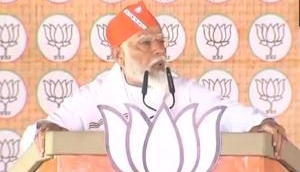
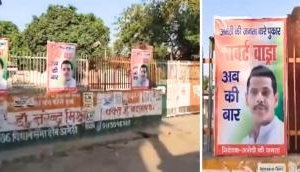
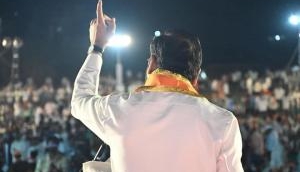

![BJP's Kapil Mishra recreates Shankar Mahadevan’s ‘Breathless’ song to highlight Delhi pollution [WATCH] BJP's Kapil Mishra recreates Shankar Mahadevan’s ‘Breathless’ song to highlight Delhi pollution [WATCH]](http://images.catchnews.com/upload/2022/11/03/kapil-mishra_240884_300x172.png)

![Anupam Kher shares pictures of his toned body on 67th birthday [MUST SEE] Anupam Kher shares pictures of his toned body on 67th birthday [MUST SEE]](http://images.catchnews.com/upload/2022/03/07/Anupam_kher_231145_300x172.jpg)


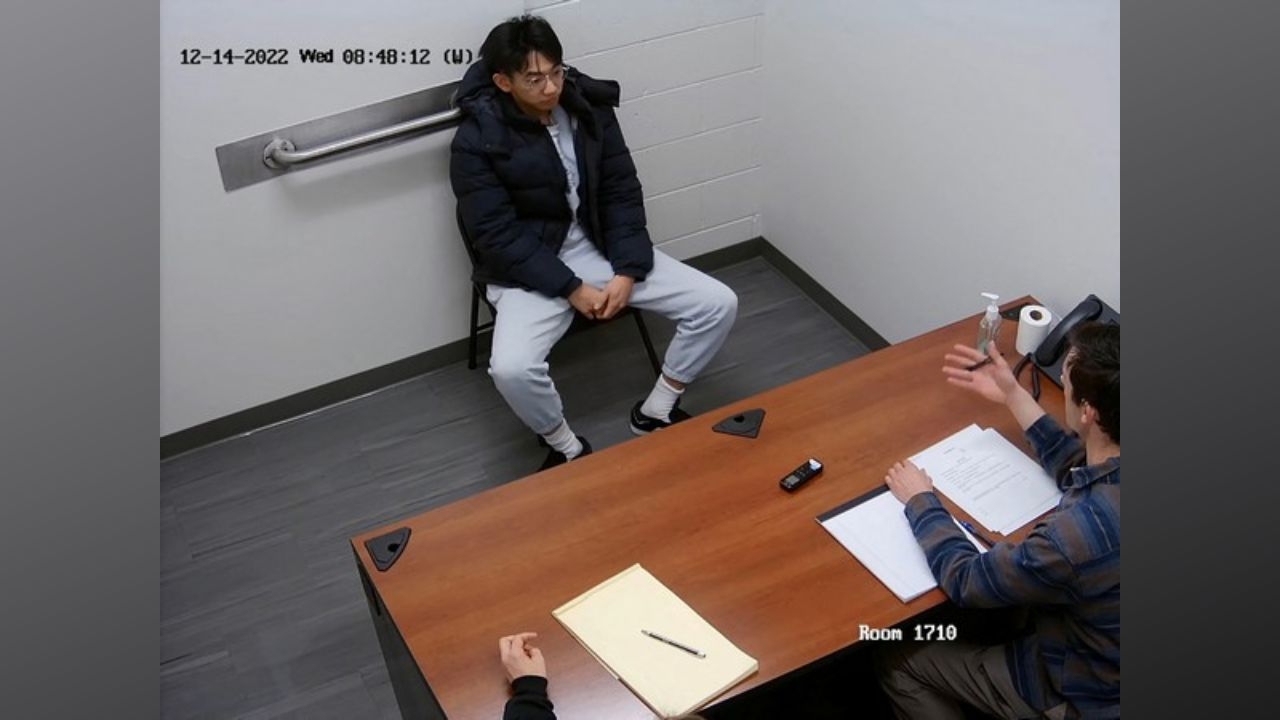

_251372_1280x720.jpg)
_251371_1280x720.jpg)
